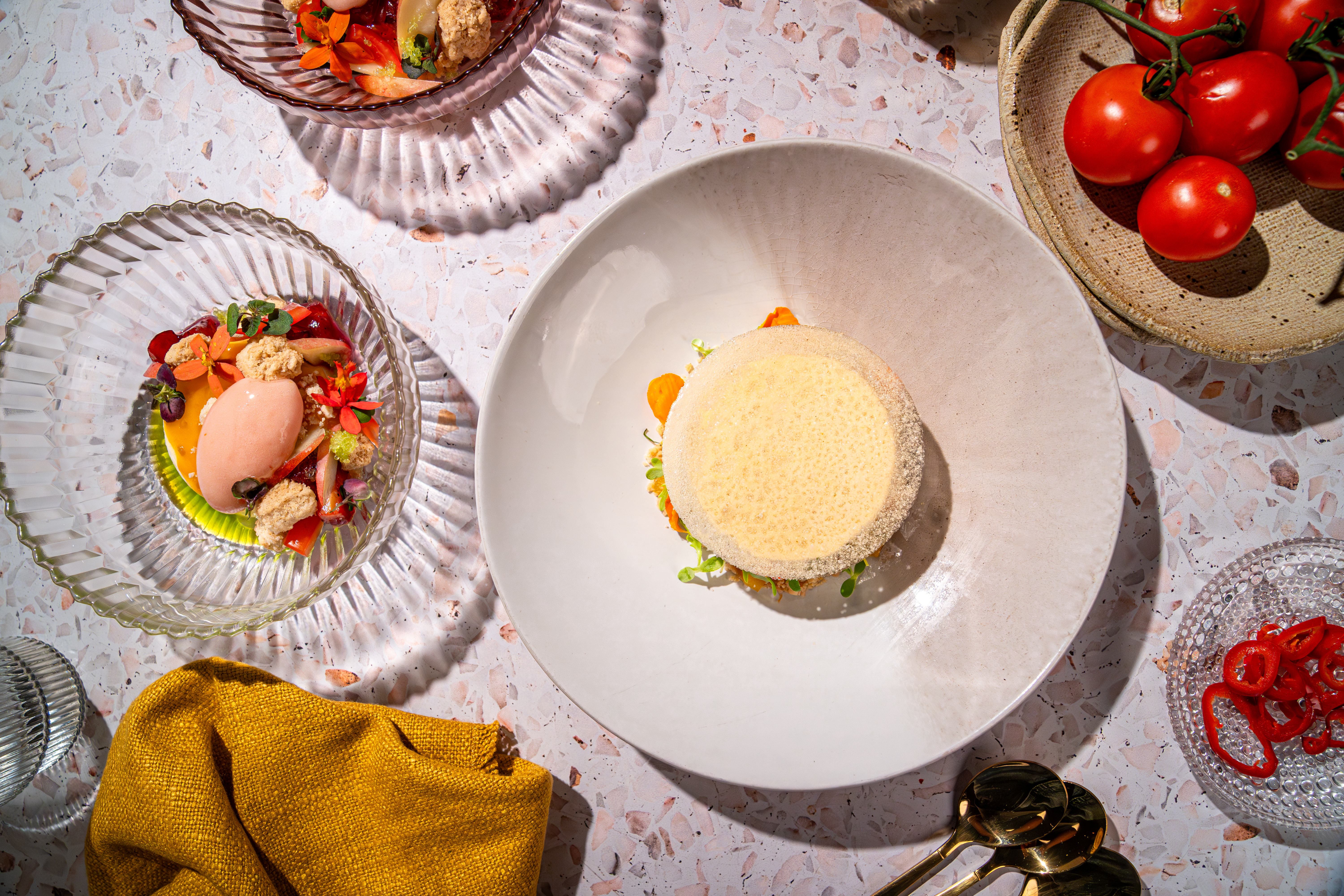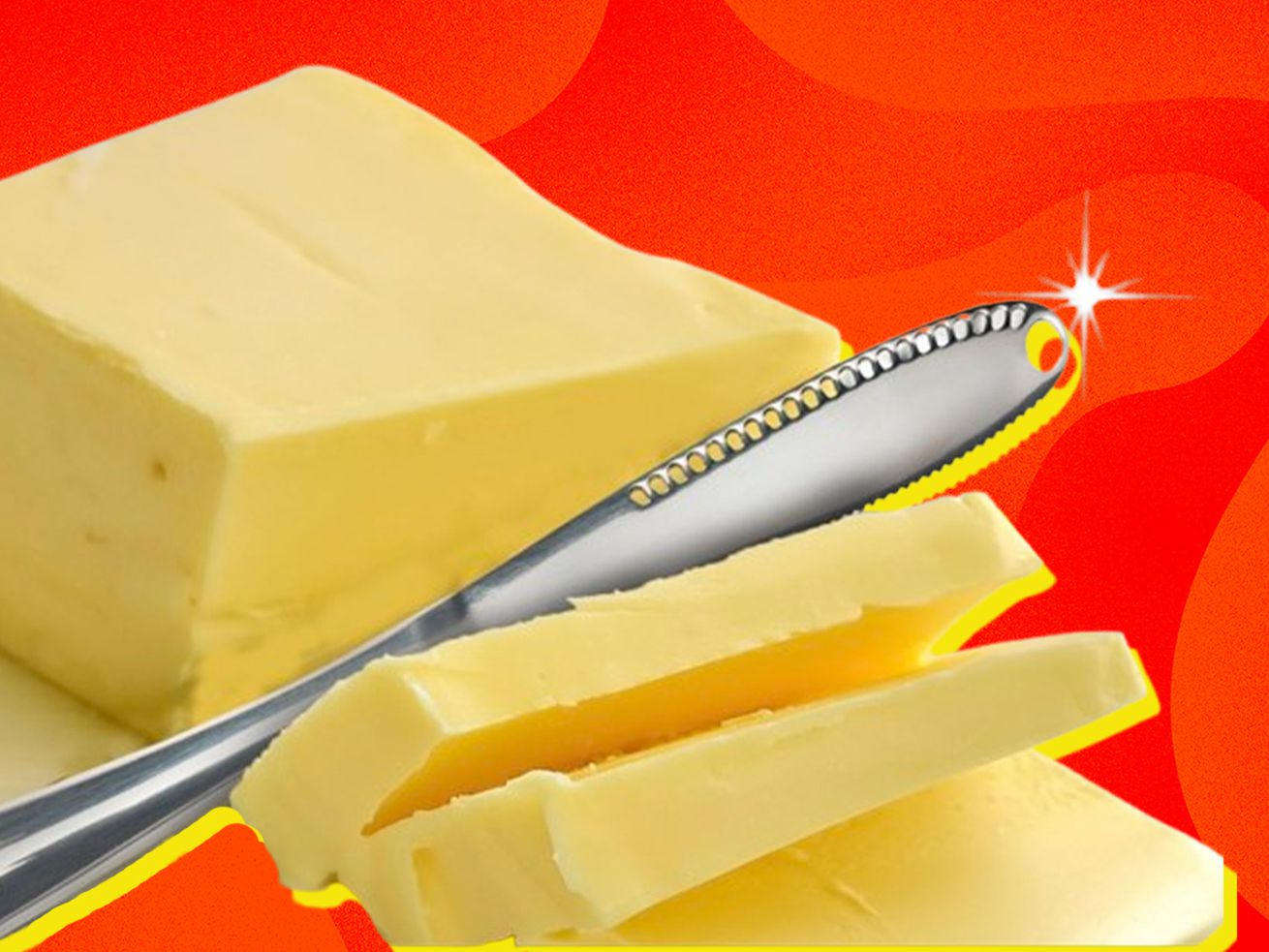Moon Rabbit pastry chef Susan Bae makes desserts with savory elements, herbs, and vegetables.
As a child, pastry chef Susan Bae hated doenjang jjigae, the Korean stew made with fermented soybean paste, and an assortment of veggies. These days, she says, “I think I love it.” For that reason, Bae now has the dish on the menu at Washington, D.C.’s Moon Rabbit, albeit as a dessert.
Bae’s sweetened rendition of doenjang jjigae is a tofu cheesecake with a base of zucchini cake. Charred-miso creme anglaise, confit squash, and a jam made with chef-favorite Nardello peppers complete the dish. It’s a dessert with all the savory flavors of doenjang jjigae — and all the vegetables too.
For Moon Rabbit, which describes itself as “reimagined Vietnamese cuisine,” Bae wanted to incorporate the savory elements, herbs, and vegetables of Southeast Asian cuisine into her desserts as well. In every dish, she wanted a balance of “sweet, salty, and a bit of this random ‘what is that?’ flavor.”
What is that flavor? At some restaurants, it’s vegetables where you least expect them: in dessert. While Bae’s desserts are especially adventurous, root vegetables, of course, have often found themself in sweets; at Atoma in Seattle, there might be parsnips in the famous baked Alaska. Some inclusions, like cucumber and tomato, are technically fruit even if they’re functionally treated like vegetables: Cucumber appears in a granita that’s served alongside the chamomile custard at Firstborn in Los Angeles, and in sorbet at Rory’s Place in Ojai, California (the latter has also employed spring peas in ice cream). Salt & Straw recently put tomato-Gruyere ice cream on the menu. With these desserts, chefs are challenging diners’ expectations and, in doing so, perhaps lifting us from a growing sense of menu ennui.
That zucchini-and-pepper dessert isn’t an outlier on Moon Rabbit’s pastry program. “I’m a pastry chef, but I actually love, appreciate, and prefer savory food,” Bae says. There’s a sponge cake with all the flavors of green curry, “minus the allium,” Bae says. Dill graces the durian mousse with passionfruit granita. Seaweed and sea beans round out the pandan panna cotta. And the chocolate mousse comes with wild-mushroom streusel and chanterelle ice cream, with green Sichuan peppercorn oil to enhance the savory mushroom flavor.
Compared to Moon Rabbit’s elaborate menu, the one at Los Angeles’s new Baby Bistro is minimal. There’s a bread course, four savory dishes, and just one dessert. The base of the dessert is a pine nut cookie, classic enough. It’s then topped with cucumber cremeux, followed by sweet-and-sour poached rhubarb, fennel fronds, and a spritz of thyme-infused white wine vinegar. That list of ingredients could just as easily be a salad.
Executive chef and owner Miles Thompson once considered cucumbers his favorite food and wanted to show off their versatility. Plus, he says, the dessert better fits into the restaurant’s focus on vegetables. “A buttermilk cake with cream cheese frosting doesn’t really vibe with our ethos,” he said. According to Thompson, the dish was the “most well-received item on the entire menu” when Baby Bistro was just a pop-up.
It might seem like a bold choice to offer something so unconventional as the restaurant’s only dessert. If the goal, especially in this economy, is to maximize the average spend per table and to get regular diners, why not go for a known favorite — the tiramisus and panna cottas that we see everywhere? For some chefs, the whole point is to give people what they don’t expect but might enjoy anyway.
Diners tend to be “taken aback” by her desserts, Bae admits, though ultimately pleased by them. “Part of the experience that I like to provide is to look at these savory ingredients that are unconventional in dessert [and prove that] we can make it taste really good in sweeter form as well,” she adds. Still, the restaurant reserves these cerebral desserts for dinner; the lunch options are more conventional, like pandan sponge cake with plum and lychee.
Similarly, since it opened in late 2024, New York City’s New England-inspired Smithereens has become known for two oddball sweets: a dessert of candied seaweed with black licorice, and a celery ice cream float. The latter employs celery two ways: first, it appears in a celery root ice cream, in which sit Luxardo cherries marinated in red wine vinegar and shio koji and drizzled with coffee oil. Then, celery is used in the bright soda that surrounds the ice cream. The pairing is both earthy and refreshing.
“I’m a fan of desserts being as weird as possible, as long as they taste good,” says chef and owner Nick Tamburo. With training at Momofuku and Blanca — at the latter, he briefly did only pastry — Tamburo handles both sweet and savory at Smithereens in New York. He sees dessert, unlike a main dish, as “not a huge commitment.” Therefore, he says, it offers the opportunity to do something “creative and a little wacky.”
If the stereotypical New England seafood spot is sunny Taylor Swift 1989 pop, Smithereens’s take on the region exudes goth-y darkwave — askew from the mainstream. Part of Tamburo’s vision is “to make the food we’re excited about and to not feel beholden to guest expectations,” he says. There’s comfort, of course, in the classic chocolate cake. But then, there’s excitement to be found in learning whether or not a celery or seaweed dessert works for you.
“I think New York specifically, but really the whole country, is a little complacent these days when it comes to food,” Tamburo says. The resurgence of “French revival and sort of mid-century restaurants is fun,” he adds. “But I think we have enough of that.”



